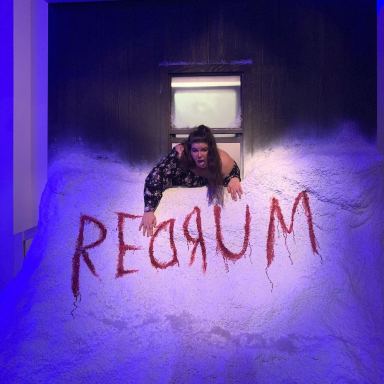72+ Movies About a Scary Societal Collapse
This list catalogs the best movies in about the end of the world or characters living in a post-apocalyptic world.
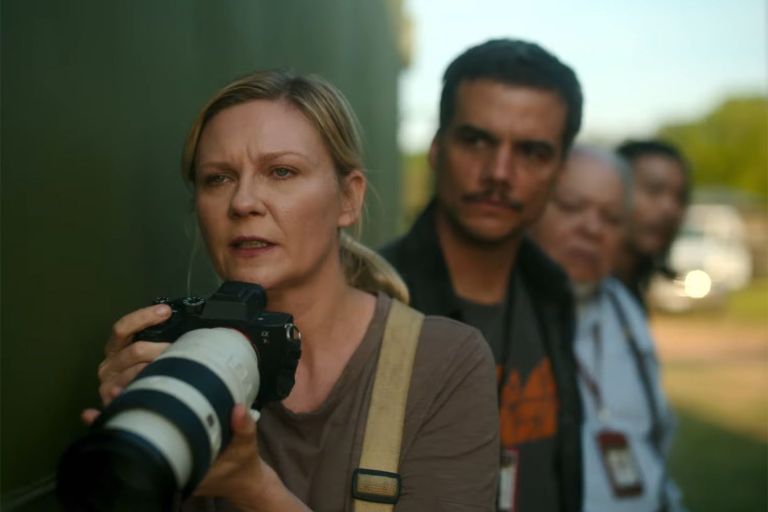
As our world becomes more antagonistic and less stable, turning to film to see what a societal collapse may look like is a terrifying ordeal. When you think about it many, many horror movies show a glimpse of societal collapse as part of their larger plot. What could be scarier than social order turning to dust at the same time a new nightmare (like the appearance of zombies, aliens and/or violent looters empowered by mob mentality) is unleashed?
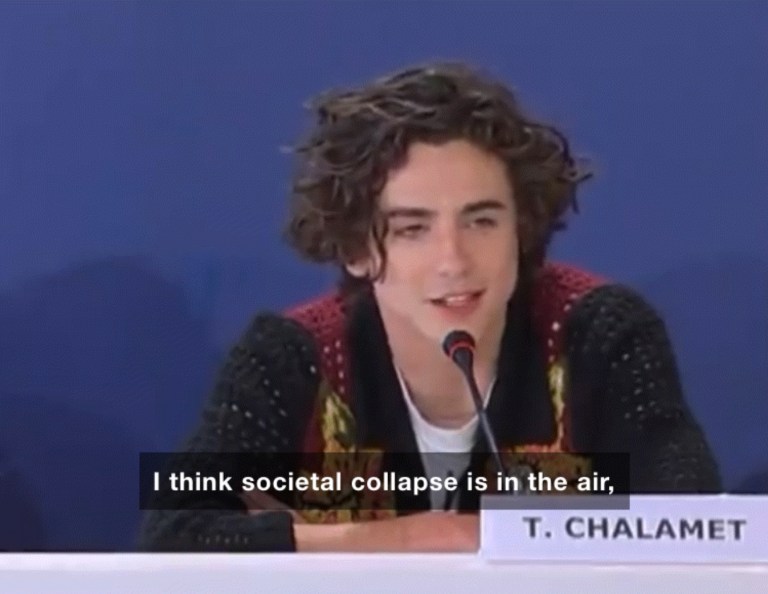
Not only do we count on society to meet our basic needs (water, electricity, food) but our safety relies on the social contract of decency as expressed in our laws and (at least in theory) enforced by police and military. A system collapse means that this delicate agreement amongst individuals to cooperate could evaporate overnight. If people suddenly decide to stop delivering food (the global supply chain), maintaining public utilities and refraining from harming others, modern humans will be thrust into a situation they are entirely unprepared for: surviving in isolation.
Here are the best movies containing a scary societal collapse, you’ll also find some television shows included at the bottom:
Lifeboat (1944)
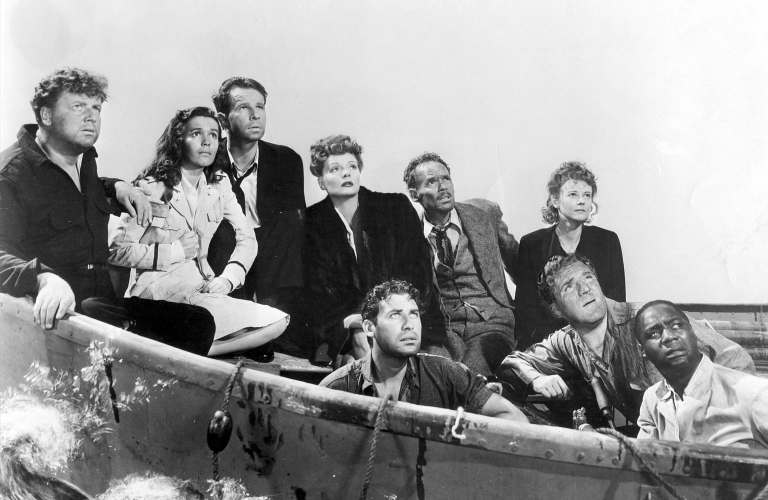
A survival film directed by Alfred Hitchcock and based on a story by John Steinbeck. Lifeboat mimics societal collapse in a limited setting after eight people survive a German U-boat attack and end up on a lifeboat together. The group alternates between conflict (fighting over rations) and cooperation (amputating the leg of an injured survivor). Lifeboat was one of Frank Darabont’s inspirations for his adaptation of The Mist (see below).
On the Beach (1959)
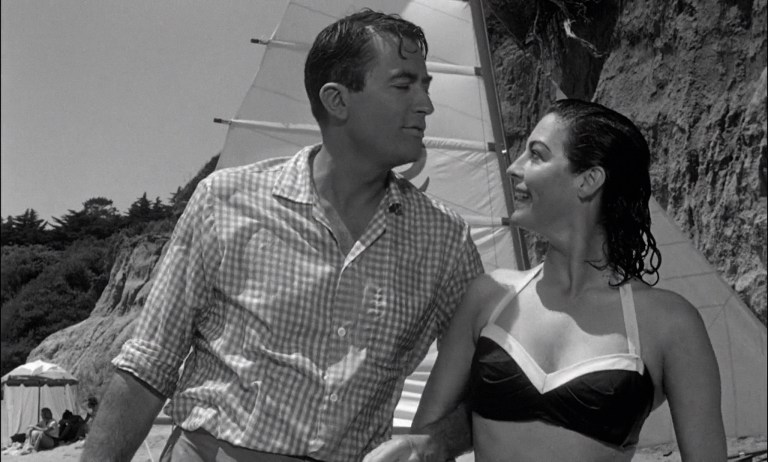
A romantic post-apocalyptic drama film starring Gregory Peck, Ava Gardner, Fred Astaire and Anthony Perkins. Set in a (then) future 1964, nuclear fallout from World War III has killed most humans on Earth and radiation will slowly reach the last surviving city, Melbourne, Australia. American and Australian naval officers and scientists work together to confirm their fate and enjoy their remaining days of life.
Dawn of the Dead (1978)

George A. Romero’s follow-up to Night of the Living Dead (1968) zooms out to show the zombie apocalypse affecting more of society before focusing on a group of people who take shelter at a deserted shopping mall. The survivors enjoys the bounty the mall has to offer before it sinks in that no one is coming to rescue them. There’s also a message about consumerism and the inevitability of societal collapse in this film, as Peter (Ken Foree) remarks of the zombies, “They’re us.”
A remake, Dawn of the Dead (2004), is a great film in its own right and has a unique opening sequence showing the beginning of the zombie apocalypse/societal collapse from the perspective of an overworked nurse (Sarah Polley).
Mad Max (1979)

A dystopian action movie starring Mel Gibson as Max Rockatansky. Max is a police officer in a near future Australia where society is collapsing due to destruction caused by climate change. After a gang hurts his family, Max relentlessly pursues revenge in the Australian desert.
Testament (1983)
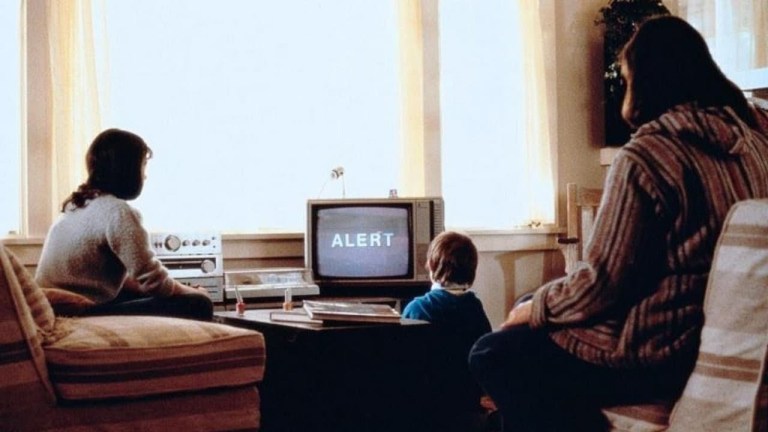
A dark drama film showing the collapse of a small town, Hamelin, in the greater San Francisco Bay Area after the outside world is destroyed by nuclear war. A regular suburban day is interrupted when television shows suddenly go off the air and are replaced with a news announcement that nuclear devices were detonated on the East Coast. With radio silence from all major cities, the town decides to move forward with a high school performance of the Pied Piper of Hamelin. The next day electricity stops working and food and gas shortages start. Town members start to die from radiation poisoning. With no hope and nothing to do other than wait for death, the residents of Hamelin come to terms with their fate.

The Day After (1983)
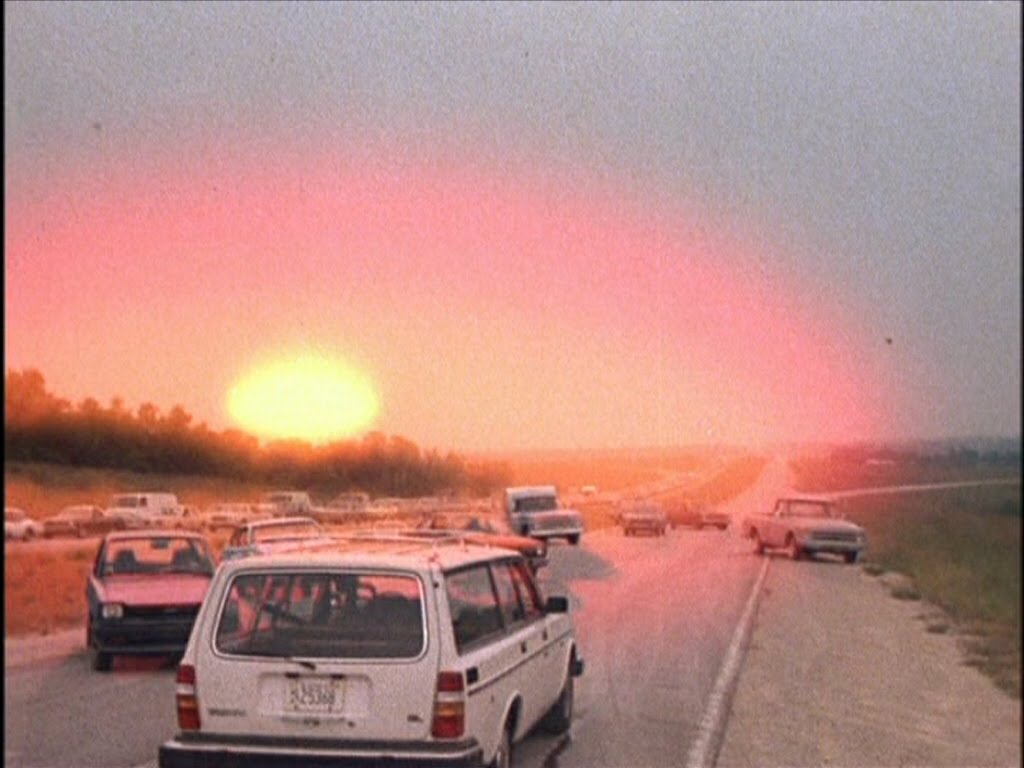
The Day After was an incredibly successful television movie that was watched by 62% of viewers during its initial broadcast. It was the highest-rated television movie of all time until 2009. The film follows an ensemble cast of characters in the greater Kansas City, Missouri area as a nuclear war begins between the U.S. and the Soviet Union. Heartland residents panic buy supplies and an EMP destroys the electrical grid and renders vehicles useless. Nearby military bases are nuked. Going outside becomes fatal. Looters are executed without trial while the president makes radio speeches about freedom and democracy. As the end credits roll, a disclaimer warns viewers that The Day After is fictional and a real life nuclear war would be “much worse” than what was depicted on screen.
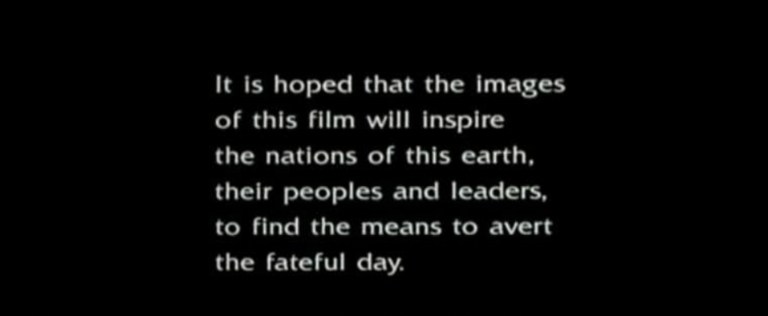
Night of the Comet (1984)

A sci-fi comedy horror movie about an 18-year-old woman, Reggie (Catherine Mary Stewart) who accidentally survives the apocalypse by having sex (and spending the night in) a steel-lined projection booth at the movie theater where she works. Her 16-year-old sister, Sam (Kelli Maroney), also survived by sleeping in their steel-lined backyard shed. The next day, Reggie discovers that almost everyone on Earth has evaporated or turned into a zombie. Reggie and Sam hit the mall for guns and clothes and fight evil scientists for survival.
Threads (1984)
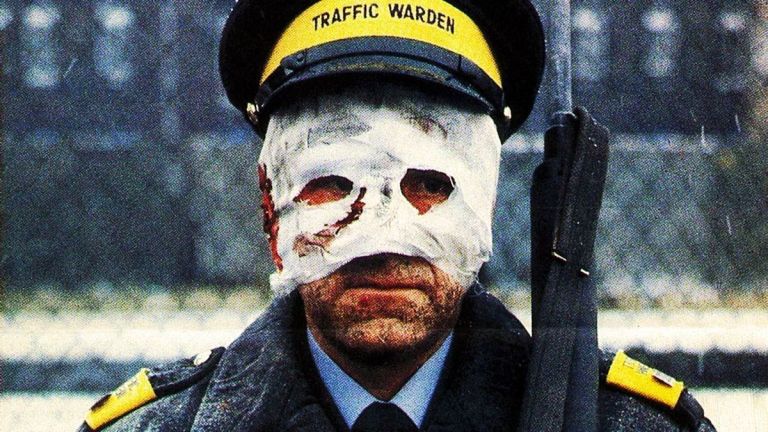
A powerful apocalyptic war drama television movie set in Sheffield, England during and after a nuclear war between the United States and the Soviet Union. After the American military deploys a nuclear weapon at a Soviet base in Turkey, Britain descends into chaos as people panic buy and loot supplies. Sheffield authorities are given unprecedented control over citizens, phone lines are cut and travel is restricted. 12 to 30 million Brits are killed in subsequent nuclear attacks and the remaining citizens are basically left to survive on their own. Months and years later chaos still reigns as the country deals with violence, food scarcity and permanent damage to quality of life (cataracts, cancer, infertility).
Miracle Mile (1988)
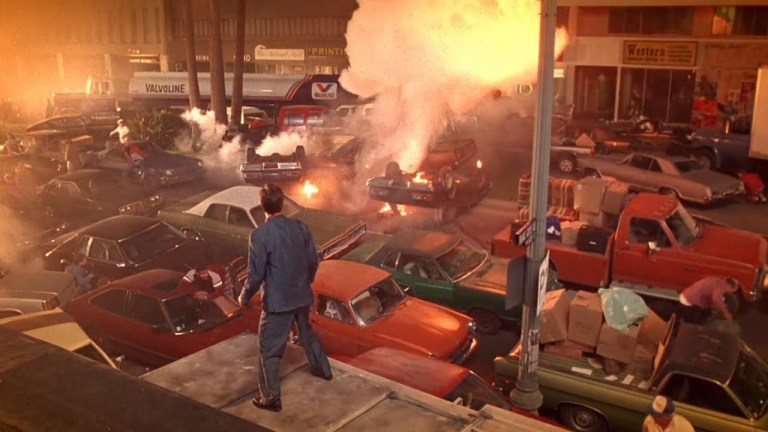
An apocalyptic thriller drama that takes place mostly in real time in the Miracle Mile neighborhood of Los Angeles. After sleeping through a promising date, Harry (Anthony Edwards) goes to a diner to find Julie (Mare Winningham). Instead, Harry is accidentally informed of the imminent destruction of most of the planet due to nuclear holocaust. When a businesswoman (Denise Crosby) at the diner confirms their impending doom and decides to flee to Antarctica, Harry stays to find Julie.
I think when I wrote it the intention was to wake people up and, you know, change the world.
Steve De Jarnatt, ‘Miracle Mile’ at 30: The Nixed Happy Ending and Alternate Castings Revealed
Lord of the Flies (1990)
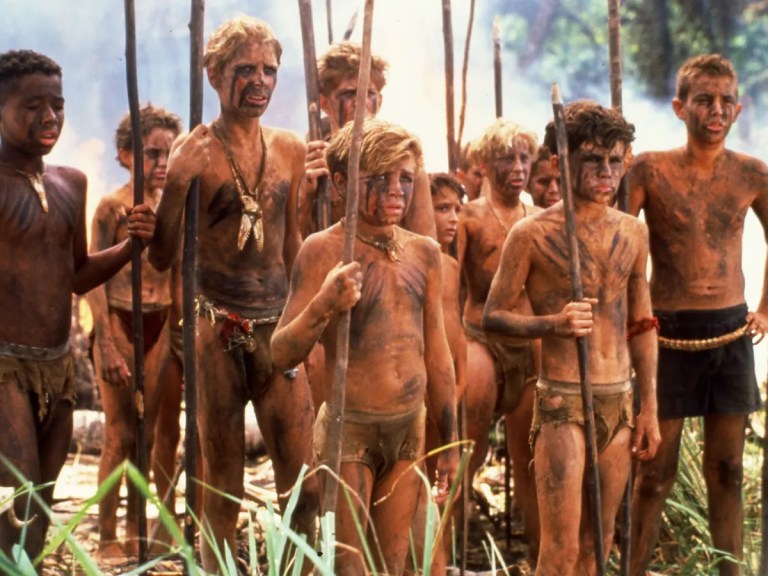
A survival drama based on the 1954 book of the same name. Societal collapse in this film is simulated by a group of young military cadet boys forming a makeshift society on a deserted island after surviving an airplane crash in the Pacific Ocean. As the boys fight with each other for power, they become more unhinged and violent and the number of boys who wish to remain “civilized” as opposed to becoming a savage dwindles down to one.
The Trigger Effect (1996)

A thriller showing the speedy breakdown of society during a long power outage in Southern California. Waking to a widespread blackout, Annie (Elisabeth Shue) and Matthew (Kyle MacLachlan) discover they are unable to get needed medicine for their infant. Annie’s best friend, Joe (Dermot Mulroney), decides to buy a gun and stay with the young family so that they can all be safer together. The next night an intruder breaks into the home and is killed by Annie and Matthew’s neighbors, all involved decide to lie and say the intruder was armed. The group then decides to flee to Annie’s parents house 530 miles away, and encounter more obstacles on the way.
The Stand (1994)

A post-apocalyptic television miniseries that is an adaptation of Stephen King’s massive novel of the same name. After a a weaponized strain of the flu leaks out of a government lab, 99.4% of the world’s population is wiped out. The immune survivors are led by visions to build a community in Boulder with Mother Abigail or live as savages with the demonic Randall Flagg in Las Vegas. Eventually a small group from Colorado travels by foot to Nevada to have a final confrontation with Flagg.
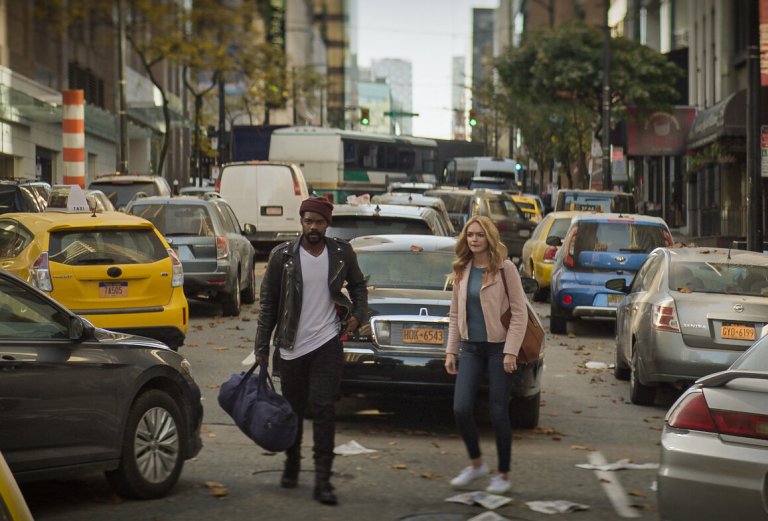
King’s novel was also adapted into a 9-episode miniseries in 2020 with James Marsden, Alexander Skarsgård and Whoopi Goldberg in starring roles. This version features a new ending written by Stephen King and his son Owen King (who was also a producer and director on the project) in which Randall Flagg is shown to have survived. Ironically, filming was completed just days before the COVID-19 shutdown in March 2020.
28 Days Later (2002)
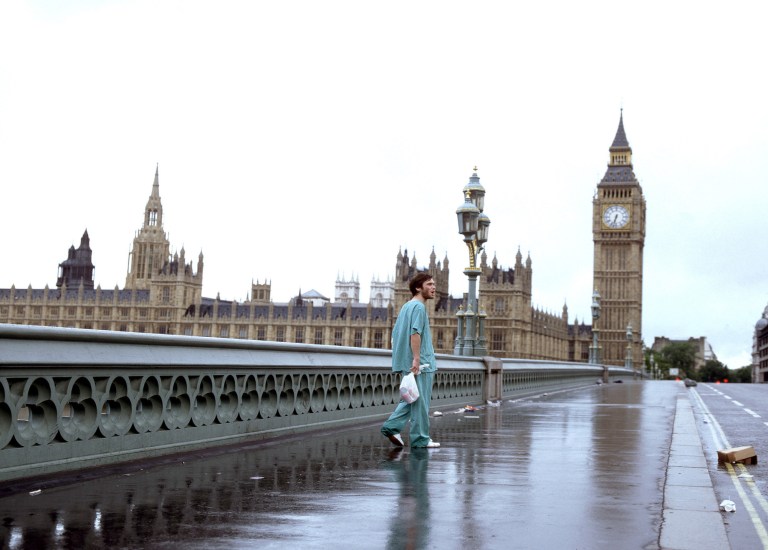
This post-apocalyptic horror movie opens with an iconic montage of protagonist Jim (Cillian Murphy) wandering around a deserted London after waking alone in a hospital bed. Jim discovers that in the previous 28 days an epidemic of the “rage virus” caused a societal collapse. On the run from fast-moving infected, Jim meets other survivors and travels to a military blockade in Manchester where they have been promised safety. Instead, the group discovers that the soldiers hoped their message would attract female survivors they could imprison as sex slaves and again are forced to fight for their lives.
A sequel, 28 Weeks Later (2007) follows American efforts to create a safe zone in London after the entire country of Great Britain is presumed killed by the rage virus.
Time of the Wolf (2003)
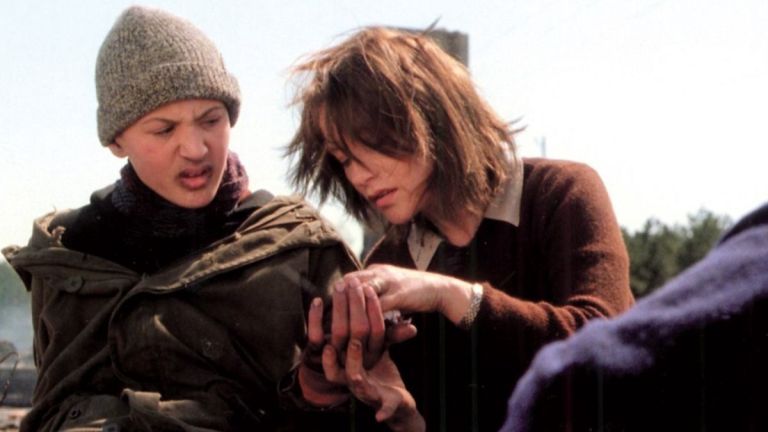
A very grim French post-apocalyptic drama set in an unknown time after an unknown disaster. The Laurent family flees Paris for their country home, but are assaulted by the strangers who have taken refuge there. With no supplies, the family is turned away by people they once knew and have no choice but to hope for a train that can return them to Paris.
Children of Men (2006)
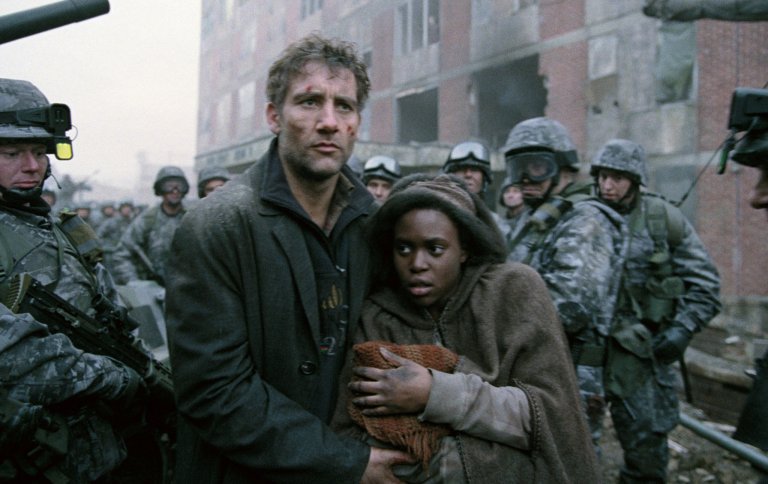
A dystopian action thriller thought to present a somewhat realistic glimpse of life during a societal collapse. Set in the United Kingdom in 2027, following two decades of total infertility due to climate change, the country is operated as a police state. Refugees are turned away or executed. Theo (Clive Owen) is tasked by his activist ex-wife Julian (Julianne Moore) with safely transporting a refugee, Kee (Clare-Hope Ashitey), the only pregnant person in the entire world.
The Mist (2007)
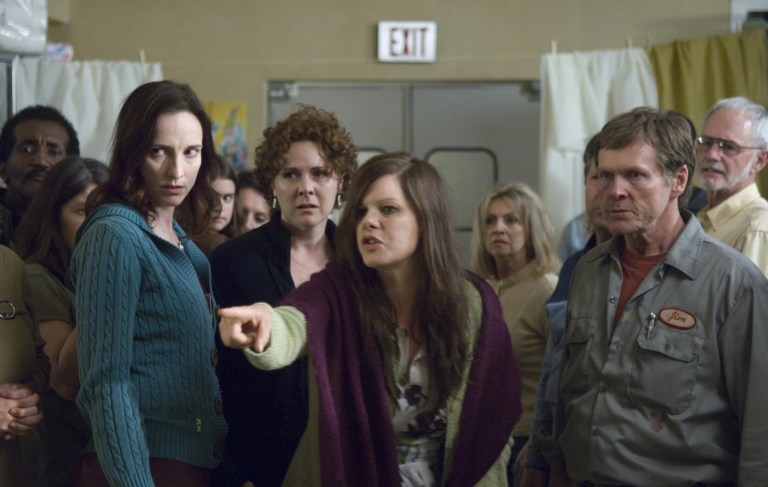
A sci-fi horror movie about a group of people trapped in a supermarket by the sudden appearance of a supernatural mist containing various deadly monsters. Although the Lovecraftian monsters in The Mist are fearsome, what’s really scary are the human beings. Actress Laurie Holden compared the events of The Mist to what hurricane refugees experienced at the Louisiana Superdome during Katrina. The Mist is also remembered for having one of the most upsetting endings in cinematic history. This ending differs from Stephen King’s novella, but the author has praised writer/director Frank Darabont’s new ending and called it “frightening”.

The Mist was also adapted into a 10-episode miniseries in 2017. While it is nowhere near the realm of quality as Frank Darabont’s movie, the miniseries does show more detailed storylines of people dealing with societal collapse. One subplot involves a group of people trapped in a mall who have differing ideas about how to survive together.
I Am Legend (2007)
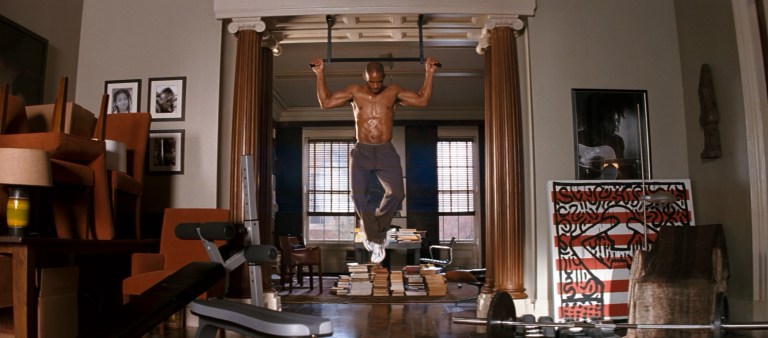
A post-apocalyptic action thriller based on Richard Matheson’s novel of the same name. Will Smith stars as Dr. Robert Neville, a U.S. Army virologist who has survived a pandemic that has left him as the only living man in New York City. Surrounded by vampiric “darkseekers” that remain hidden during daylight, Neville passes the time gathering supplies, searching for other survivors and attempting to find a cure for the virus.
The Road (2009)
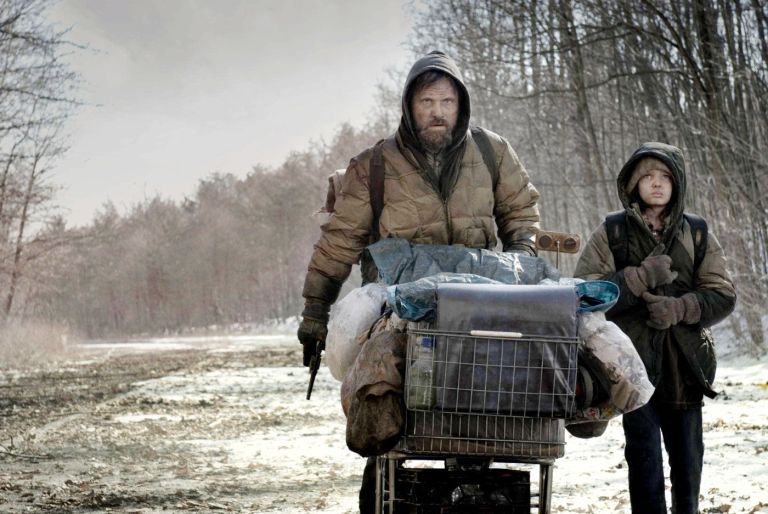
A post-apocalyptic survival film based on the book by Cormac McCarthy. After an unknown extinction level event, a father (Viggo Mortensen) and son (Kodi Smit-McPhee) travel on a road searching for supplies and dreaming of finding safety while avoiding roving bands of rapist cannibals. Brutal and bleak, The Road shows a world full of traumatized people (as a result of the extinction event before the film starts), some of whom revert to barbarianism and some who hold on to their humanity as they all struggle to survive.
Contagion (2011)
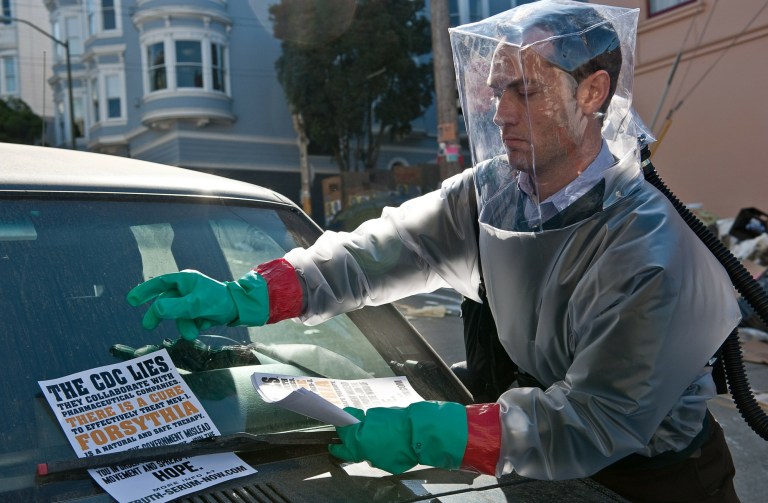
A pandemic thriller that follows an ensemble cast during a global pandemic of a highly-contagious respiratory virus. Released almost a full decade before the COVID-19 pandemic, Contagion did a pretty good job accurately guessing how Americans would respond to such a health crisis like its depictions of panic buying and Alan Krumwiede’s (Jude Law) storyline of selling scam cures. As the fatality rate of the fictional disease in Contagion was much higher than COVID-19, the film also showed more looting and violence as the population dwindled and civil unrest increased.
‘The Purge’ franchise (2013-2021)
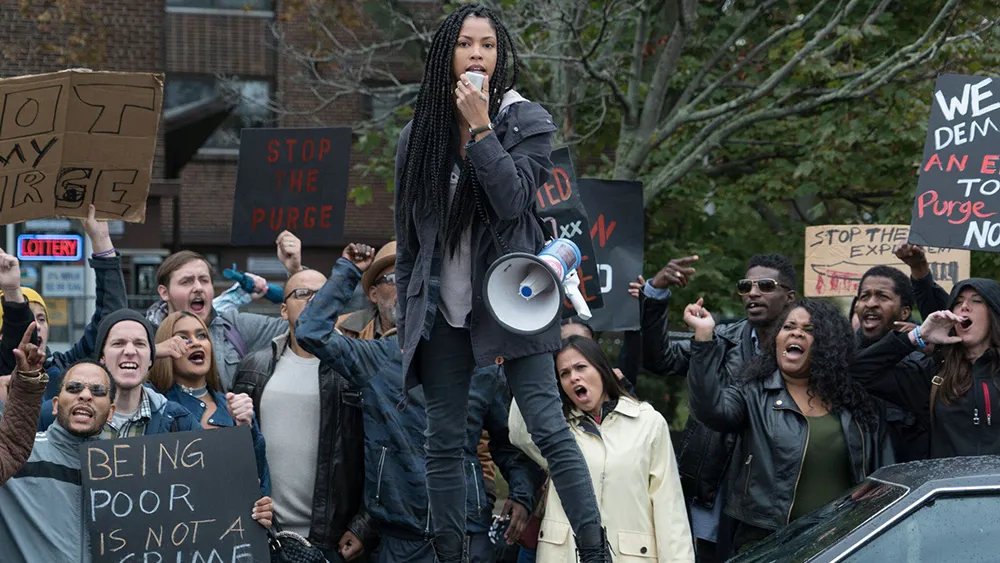
In the dystopian near-future America of The Purge films, almost all crime (including murder) is legal during an annual 12-hour period known as The Purge. Through a series of anthology films (and two seasons of a television show), The Purge digs deeper than typical survival movies by slowly revealing layers of malfeasance, showing that what looks like disorganized chaos is actually a well-orchestrated plot to keep a political party (the New Founding Fathers) in power and execute poor people. In the latest installment, The Forever Purge (2021), the New Founding Fathers’ plan works too well and a group of their followers refuse to stop murdering after the Purge ends.
These Final Hours (2013)
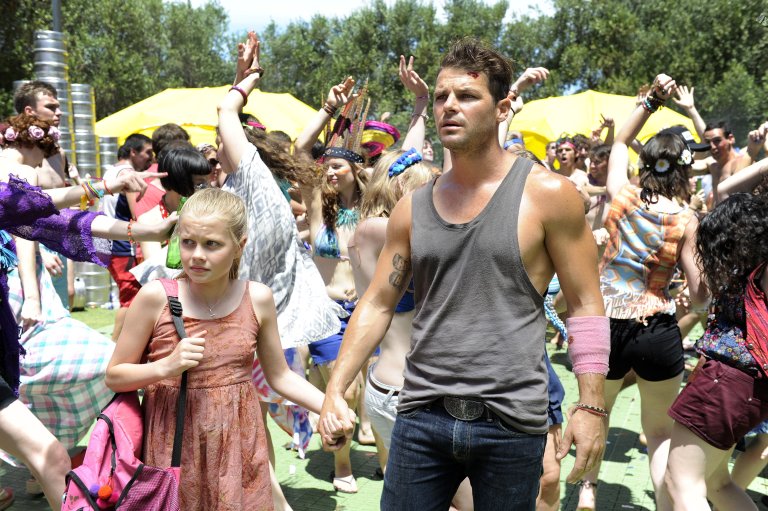
An Australian sci-fi thriller that takes place after an asteroid hits North America. Australians have just twelve hours before the firestorm reaches them and obliterates life on Earth. James (Nathan Phillips) selfishly leaves his pregnant mistress, wishing to spend the day hedonistically enjoying an end-of-the-world party. On the way, he rescues a girl (Angourie Rice) from rapists and eventually has a change of heart, seeking to reunite her with her family.
World War Z (2013)
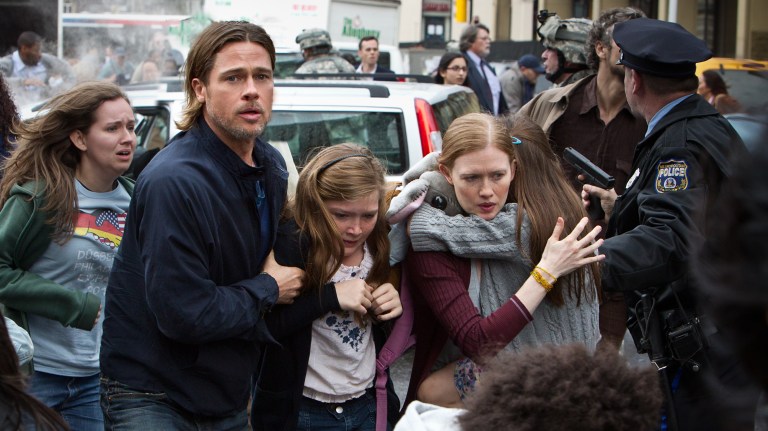
An action horror movie depicting a zombie apocalypse from the perspective of a retired U.N. investigator, Gerry Lane (Brad Pitt), who is rescued with his family and brought to a Navy ship in the Atlantic Ocean. With other military officials from around the world, Gerry seeks to discover enough about the virus to help create a vaccine. This allows the audience to see how different world governments respond to the crisis.
10 Cloverfield Lane (2016)
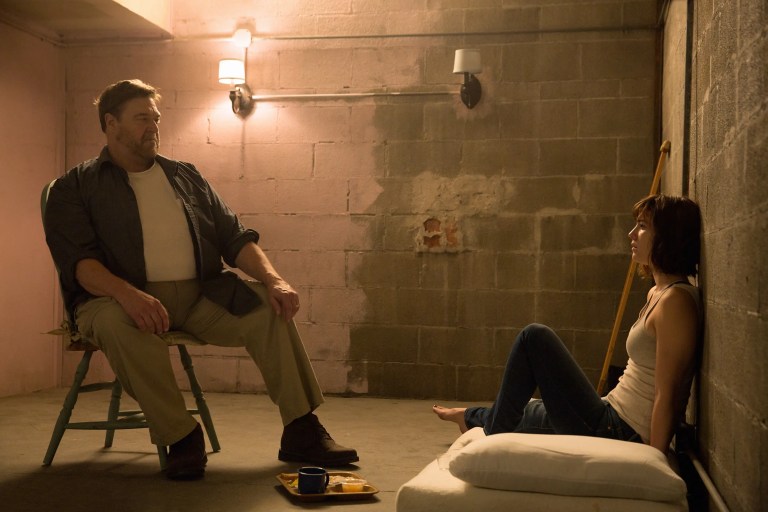
A sci-fi horror thriller that finds an injured woman, Michelle (Mary Elizabeth Winstead), awakening imprisoned in a bunker following the chaos of widespread blackouts. Her captor Howard (John Goodman) insists that the outside world is unsafe and he has rescued Michelle and is holding her hostage for her own good. Although it’s hinted that Howard had at least one victim before the events of the movie, societal collapse means that he was able to kidnap and hold Michelle hostage with much more ease as there was no one to stop him or look for her.
A Quiet Place (2018)

A sci-fi horror movie following the Abbott family in the aftermath of an invasion of alien predators with highly sensitive hearing. Because the family already lived on a farm and knew ASL (daughter Regan is deaf), they have been able to survive longer than most. When matriarch Evelyn (Emily Blunt) struggles to give birth in silence, her husband (Blunt’s real life husband and the film’s director John Krasinski) arrives to lure the aliens away.
A sequel, A Quiet Place Part II (2020), follows the Abbott family as they continue to seek safety while on the run from the alien invaders.
Silent Night (2021)
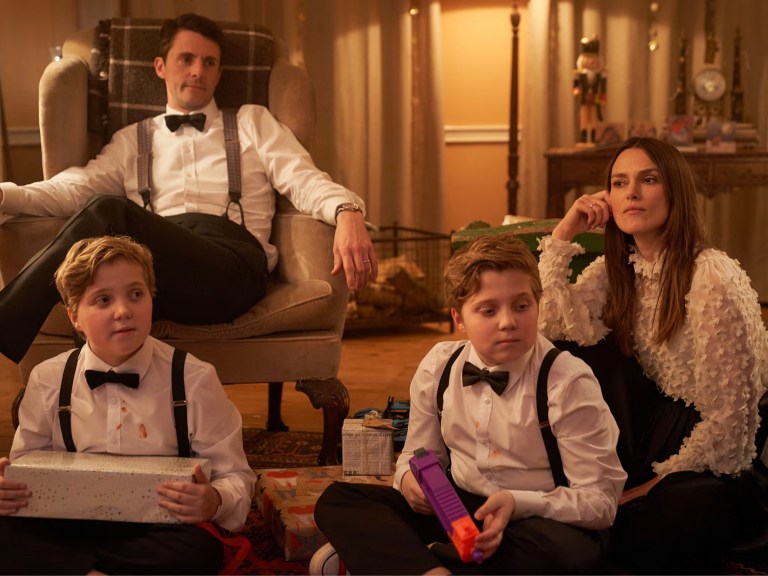
A British black comedy that is nevertheless unsettling in its depiction of a near-future where the government has issued everyone suicide pills in advance of an impending doomsday scenario. A group of friends gather for an elegant Christmas dinner party at a country estate. As it is their last evening of life, the children are allowed to swear and secrets are discussed openly at the table. As the night goes on, some of the group debate whether they want to take the suicide pill or take their chances with the unknown.
Civil War (2024)

Written and directed by Alex Garland, Civil War is a 2024 epic war drama released by A24. The film portrays a near future in which the United States is a year-and-a-half into its second civil war. A group of journalists travel to Washington, D.C. in the hopes of getting the last interview with the current president as the capital falls. Along the way, they encounter American refugee camps, sadistic extremists, and soldiers fighting for all sides.
More scary societal collapses in TV and film

“The Monsters Are Due on Maple Street” (1960) — Episode of The Twilight Zone that shows a picturesque suburban neighborhood descending into paranoia and panic in the midst of a power outage and rumors of an alien invasion.
The Last Man on Earth (1964) — A sci-fi horror movie based on the novel I Am Legend by Richard Matheson.
Night of the Living Dead (1968) — A grim lesson from the film’s shocking twist-ending is how well-intentioned armed citizens have poor decision-making skills in a societal collapse situation.
The Omega Man (1971) — Another adaptation of Richard Matheson’s I Am Legend.
Soylent Green (1973) — New York City descends into dystopian madness as a result of climate change.
When the Wind Blows (1986) — An animated disaster film about a British couple living through Nuclear winter.
Masque of the Red Death (1989) — A prince and his wealthy friends party at a masked ball while outside the common people die en masse from the plague. Based on the short story of the same name by Edgar Allan Poe.
Outbreak (1995) — The American government considers bombing an entire California town in order to contain the spread of an infection disease.
Waterworld (1995) — A post-apocalyptic blockbuster starring Kevin Costner as a lone drifter in a future Earth where sea levels have risen enough to cover all of the continents in water.
Deep Impact (1998) — A comet is discovered on a path to collide with Earth, which will cause the annihilation of the human race.
Last Night (1998) — A black comedy drama about a group of friends in Toronto as they await the imminent arrival of the (unexplained) end of the world.
Shaun Of The Dead (2004) — A comedic take on a zombie apocalypse.
The Day After Tomorrow (2004) — the United States becomes uninhabitable in a matter of days due to extreme cold brought on by climate change.
War of the Worlds (2005) — Steven Spielberg’s take on the classic H.P. Wells story includes depictions of how society would respond to an alien invasion.
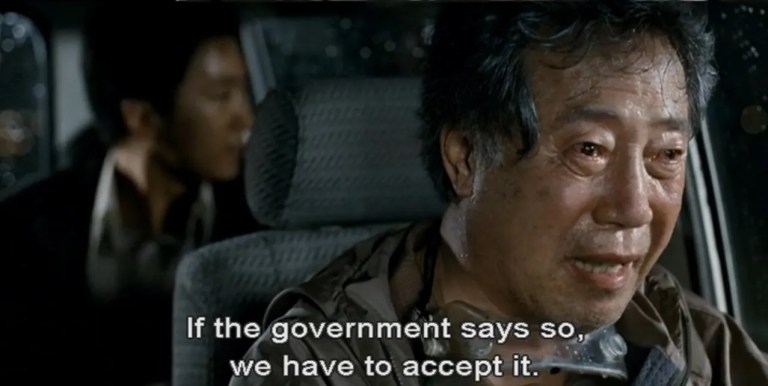
The Host (2006) — A subplot of this monster movie deals with the South Korean government fabricating warnings about a contagious virus to distract citizens from the appearance of a river monster that eats people.
Idiocracy (2006) — A sci-fi comedy that sees an army librarian accidentally sent 500 years into the future, where he witnesses an America run by corporations and rendered stupid by technology and evolution.
Right At Your Door (2006) — A couple wonders what to do when one of them is exposed to a toxic virus after a series of dirty bombs are detonated in Los Angeles.
The Signal (2007) — All audio/visual devices begin broadcasting a psychedelic message that causes viewers to become murderous.
Blindness (2008) — An epidemic of blindness causes widespread panic in an unnamed city.
Doomsday (2008) — A sci-fi action movie in which a deadly virus has resulted in Scotland being quarantined.
Pontypool (2008) — A unique outbreak movie about a radio DJ working the morning a fast-spreading virus breaks out in Ontario.
Carriers (2009) — After a highly-infectious virus ends life on Earth as we know it, a small group of survivors seek shelter while trying to avoid becoming infected.
Zombieland (2009) — A comedic take on the zombie apocalypse.
The Crazies (2010) — When a biological virus turns average citizens into murderers, a small town sheriff (Timothy Olyphant) and his wife (Radha Mitchell) fight for their lives.
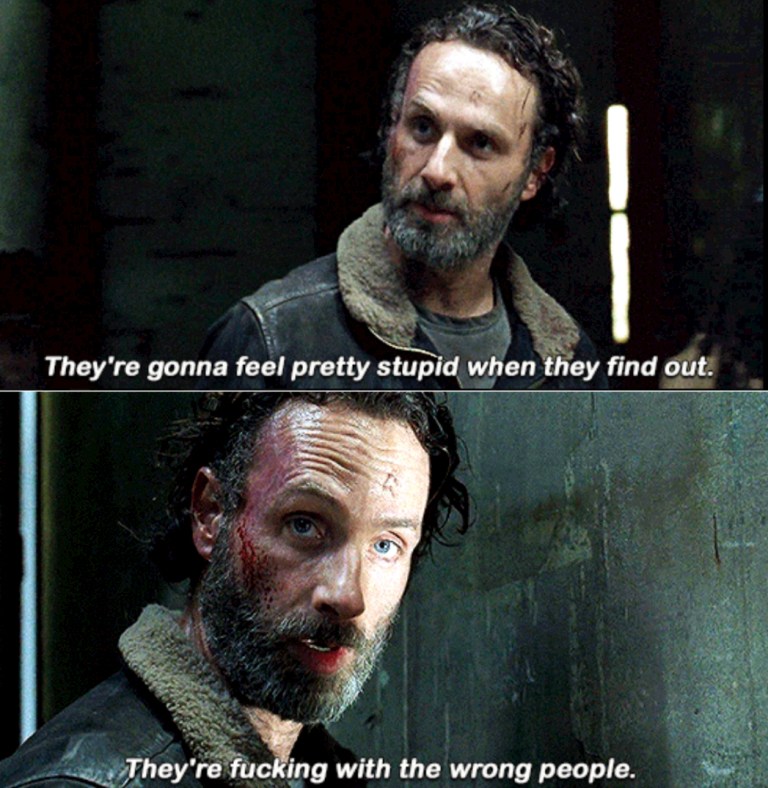
The Walking Dead (2010-2021) — a long-running television series that tells the story of a zombie apocalypse from the perspective of an ensemble cast. Some of the initial collapse of society is shown along with the survivors attempts to build communities over the years. The spinoffs, Fear the Walking Dead (2015–present) and Tales of the Walking Dead (2022) shows the initial collapse in more detail.
Vanishing on 7th Street (2010) — Most of the population suddenly vanishes, leaving only survivors who happened to be holding sources of light.
The Day (2011) — Five people struggle for survival in a post-apocalyptic future.
Melancholia (2011) — Lars von Trier wrote and directed this sci-fi drama about two sisters in the time just before a rogue planet collides with Earth.
Retreat (2011) — Cillian Murphy and Thandiwe Newton are a couple isolated on an island for a holiday when the outside world goes silent. A strange visitor informs them that a virus has caused the collapse of civilization, but the couple is unsure whether he is telling the truth.
The Bay (2012) — A found footage horror movie detailing the spread of a highly-contagious virus in the Chesapeake Bay area over the Fourth of July.
This is the End (2013) — A very funny (and star-studded) black comedy about the Biblical rapture happening to a group of celebrities during a party at James Franco’s house.
The Last Days (2013) — A catastrophic event ends life as we know it in Barcelona.
The Rover (2014) — A modern Western taking place in the Australian Outback a decade after a global collapse.
Hidden (2015) — Alexander Skarsgård stars as the patriarch of a family living in hiding from the “monsters” after an outbreak ravages their town.
Train To Busan (2016) — The end of civilization happens at break-neck speed as fast-moving zombies take over Seoul and a train of survivors hope to reach Busan before the zombies do.
Cargo (2017) — A virus that causes people to become rabid within 48 hours takes over and a man (Martin Freeman) desperately tries to keep his family safe in rural Australia.
It Comes at Night (2017) — A suspenseful psychological thriller about a family living in a cabin in the woods after a contagious virus ends life as we know it.
Bird Box (2018) — Sandra Bullock stars as a pregnant woman who witnesses the end of civilization in real time.
The Night Eats the World (2018) — After passing out at a party a man wakes in his ex-girlfriend’s Paris apartment to discover the zombie apocalypse has taken place while he was sleeping.
Black Summer (2019) — A television series following a woman (Jaime King) who searches for her daughter in the early days of a zombie apocalypse.
The Collapse (2019) — A well-made French miniseries that shows how a societal collapse would affect the lives of an ensemble cast.
#Alive (2020) — Alone in his apartment when the zombie apocalypse begins, Joon-woo (Yoo Ah-in) combats both zombies and isolation.
Don’t Look Up (2021) — A dystopian comedy film that semi-realistically portrays business as usual in the United States in the months and days leading up to an extinction-level event as most people choose to engage in collective denial about the fate of the planet.
How it Ends (2021) — A feel-good dark comedy about a Los Angeles woman (Zoe Lister-Jones) on the last day of human life on Earth. This is a great film to watch if the other movies on this list get you down.
The Sadness (2021) — Tells a wildly gory and romantic story amidst a super-charged societal collapse as a fast-acting rage virus overtakes Taipei.
Among the Living (2022) — A man and his younger sister run from feral infected humans and predatory non-infected humans.
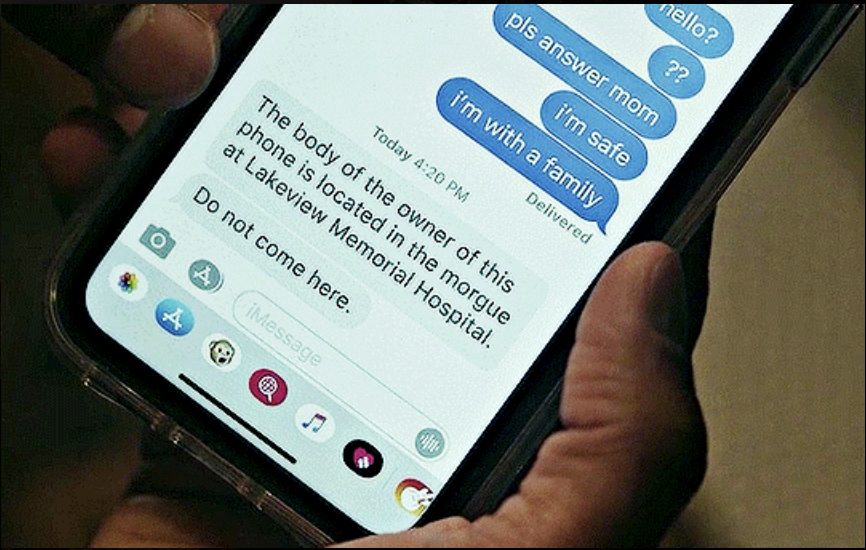
Station Eleven (2022) — A miniseries showing what civilization may look like twenty years after a flu pandemic causes mass death and the collapse of society.
History of Evil (2023) — Set in a dystopian near future, a family hides out in a safe house that happens to be haunted by the ghost of its former owner, who was a fanatical KKK member.
The Last of Us (2023-) — Twenty years into a pandemic caused by a fungal infection a smuggler (Pedro Pascal) transports an immune teenage girl (Bella Ramsey) across the post-apocalyptic US.
A Quiet Place: Day One (2024) — An alien invasion of creatures with super sensitive hearing happens in broad daylight on the crowded streets of New York City.
Humane (2024) — As a result of devastation caused by climate change, countries around the world agree to reduce their population by 20%.
Further reading:
